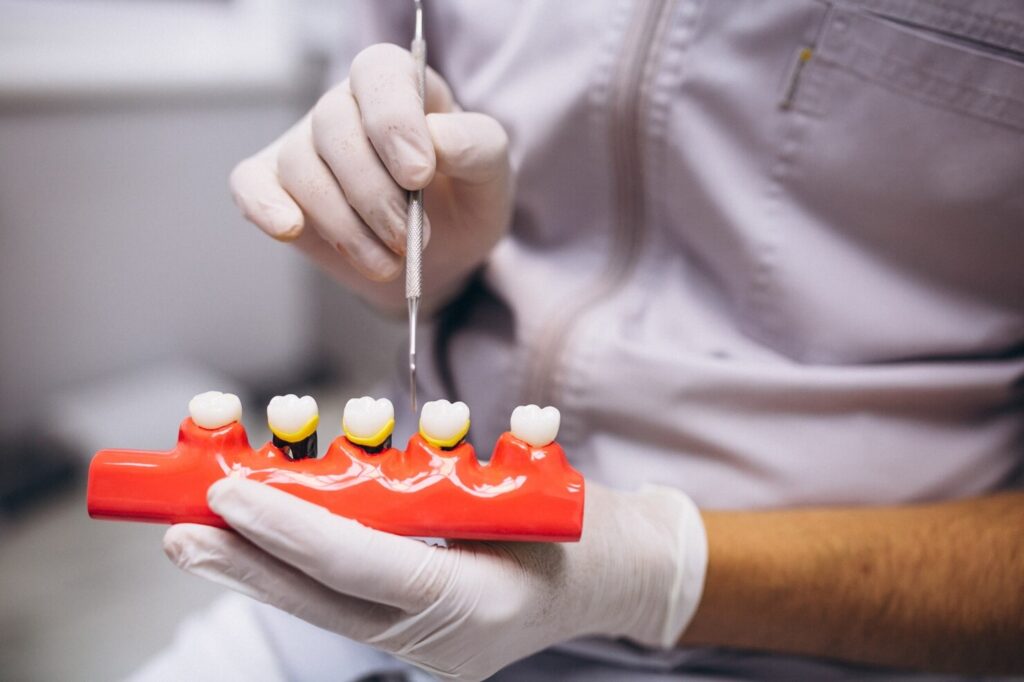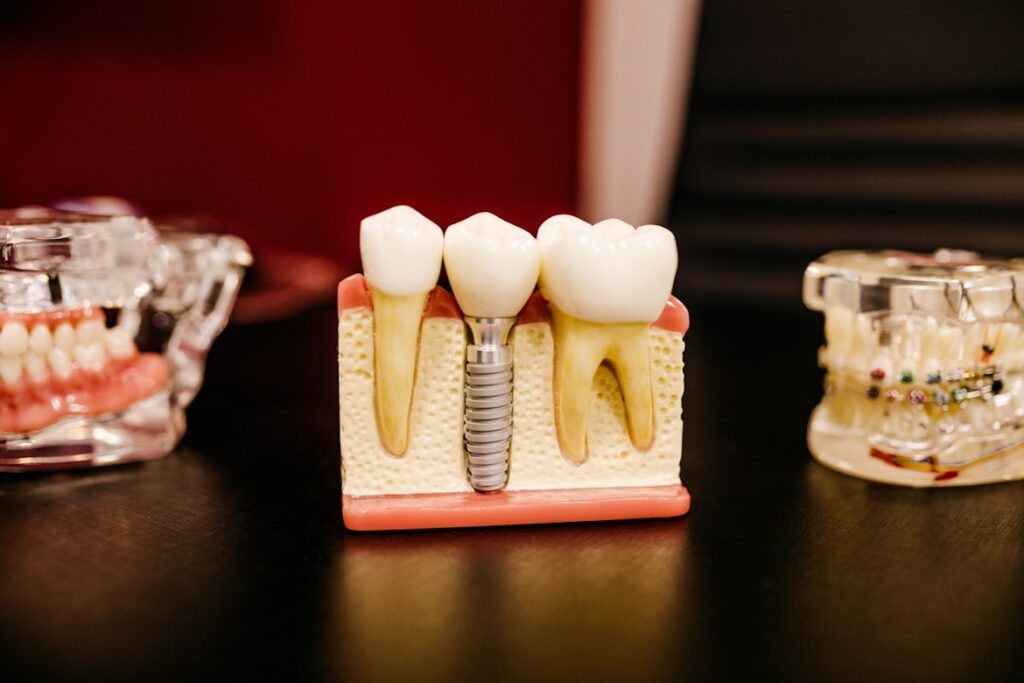Table of Contents
ToggleAll-on-4 is a proven way to replace a full arch of missing or failing teeth with a fixed bridge supported by four strategically angled dental implants. The angled placement helps avoid grafting in many cases, shortens treatment time, and restores chewing function and facial support with a natural look. Multiple reviews report implant survival in the mid-90s at 10 years, with prostheses often performing even better. Complications can still occur, but the approach is well established rather than experimental.
How the All-on-4 process works
Treatment starts with a thorough assessment, scans, and planning.
On the day of surgery, four implants are placed in the jaw, two near the front and two angled towards the back to maximise existing bone. Many patients leave with a same-day provisional bridge, then convert to a final bridge after the implants integrate with bone.
Your dentist will outline eating stages, from soft foods early on to a normal diet after healing. For day-to-day care, Health Direct suggests brushing twice daily, cleaning between teeth and implants, and attending regular check-ups.
Who is a good candidate?
All-on-4 suits adults who have lost most or all teeth in an arch, have dentures they cannot tolerate, or have advanced periodontal disease.
Adequate bone volume helps, though the protocol often avoids grafting. Certain factors raise risk and must be managed. These include a history of severe gum disease, poor plaque control, smoking, and uncontrolled diabetes. Regular maintenance visits and home care are not optional. They are central to long-term success.
A note on smoking: research consistently links tobacco use with higher implant failure and peri-implant disease. Meta-analyses report increased failure risk in smokers, and dose matters, with heavier smoking associated with worse outcomes. Quitting before and after surgery can improve prospects and should be discussed with your clinician.

What results can you expect?
Patients often report a stable bite, better speech than with removable dentures, and easier social eating. Evidence shows encouraging 5 to 10-year results, yet complications can include fracture or wear of the bridge, screw loosening, or biological issues like peri-implant mucositis and peri-implantitis. Early detection and professional care limit progression and help preserve implants for the long haul.
Costs and how patients pay for treatment
All-on-4 is a significant investment. In Australia, Medicare generally does not cover implant treatment in private practice. Some private health funds may contribute to parts of the treatment plan such as imaging or the prosthetic components, depending on your extras cover.
An exception applies for eligible veterans under the Department of Veterans’ Affairs, where limited implant entitlements exist for specific clinical scenarios. Always seek a written plan and itemised quote so you can check your cover before committing.
What to ask at your consultation
- Am I suitable for immediate loading? Not everyone can receive a fixed provisional bridge on the day. Bone quality, bite forces, and medical history guide that call. Evidence supports high survival when case selection is sound.
- What materials will you use? Implants are typically titanium. Final bridges may be zirconia, titanium-acrylic hybrids, or other combinations. Your clinician should explain the trade-offs around strength, repairability, and aesthetics with real-world examples.
- How will you maintain my bridge and implants? Ask about specific tools, recall intervals, and who will see you for maintenance. Consistent professional care reduces the risk of peri-implantitis.
- What are the risks in my case? A frank discussion about gum disease history, smoking status, diabetes control, and clenching or grinding helps you understand your personal risk profile.
Also Read: 10 Questions to Ask Your Dentist Before Getting Full Dental Implants

Common myths cleared up
“All-on-4 never needs cleaning.”
False. Biofilm still forms on prosthetic teeth and around implants, and neglected hygiene can lead to inflammation and bone loss.
“Grafting is always avoided.”
Not always. The technique reduces grafting for many, but some patients still benefit from additional procedures to achieve a stable result.
“Once integrated, implants cannot fail.”
Late complications happen, especially without maintenance or when risk factors persist. Early management keeps small problems small.
Choosing a provider in 2025
Look for a clinician with solid experience in full-arch implant rehabilitation, access to 3D planning, and a maintenance pathway that is realistic for you. If you split your time between cities, plan follow-up accordingly. For example, many patients compare clinics and interstate providers offering dental implants in Sydney. Consistency of care matters more than travel distance.
Location can shape practical choices too. If you are based in Victoria and intend to have periodic checks close to home, it may be sensible to complete treatment or at least maintenance with a trusted team that offers dental implants in Melbourne. Reliable follow-up is a better predictor of long-term comfort than chasing the lowest initial quote.
Bottom line
All-on-4 offers a fixed, natural-looking solution for people missing most or all teeth in an arch. If you are weighing your options, start with a comprehensive consultation and a written plan. Then assess not only price, but the support you will receive for the years ahead.


